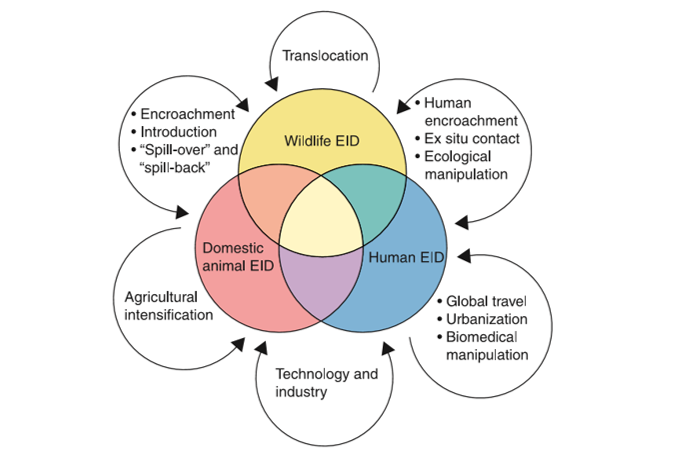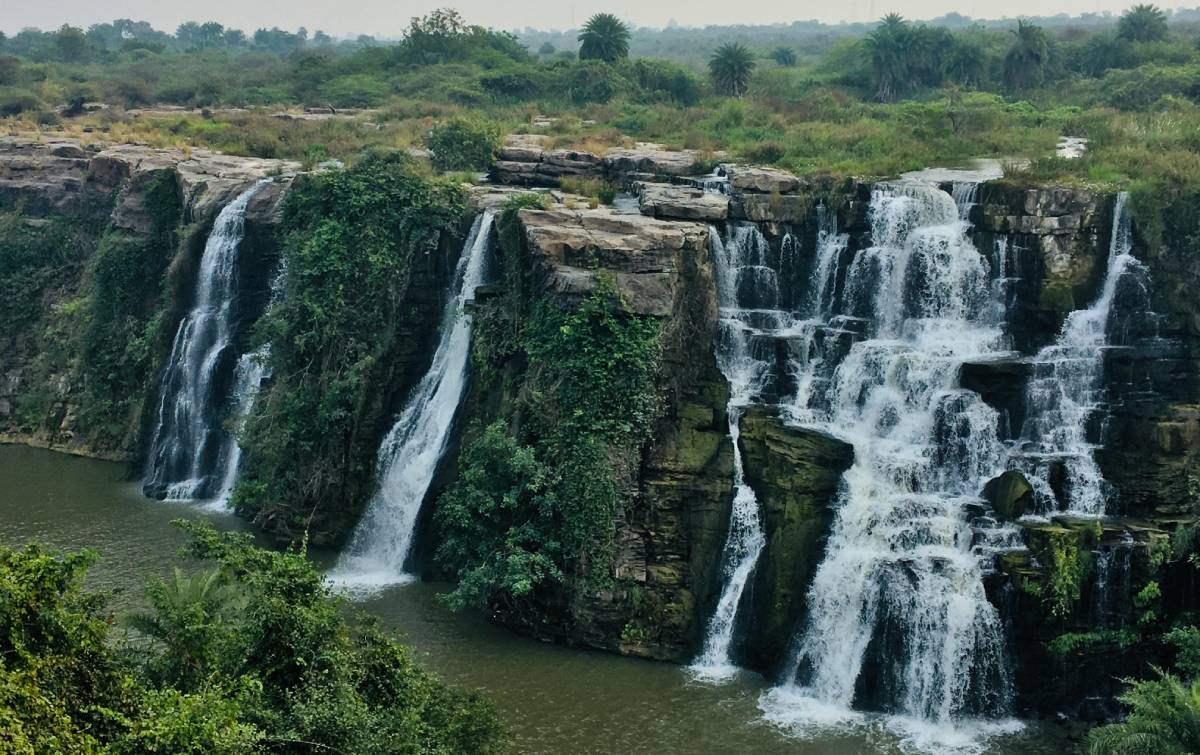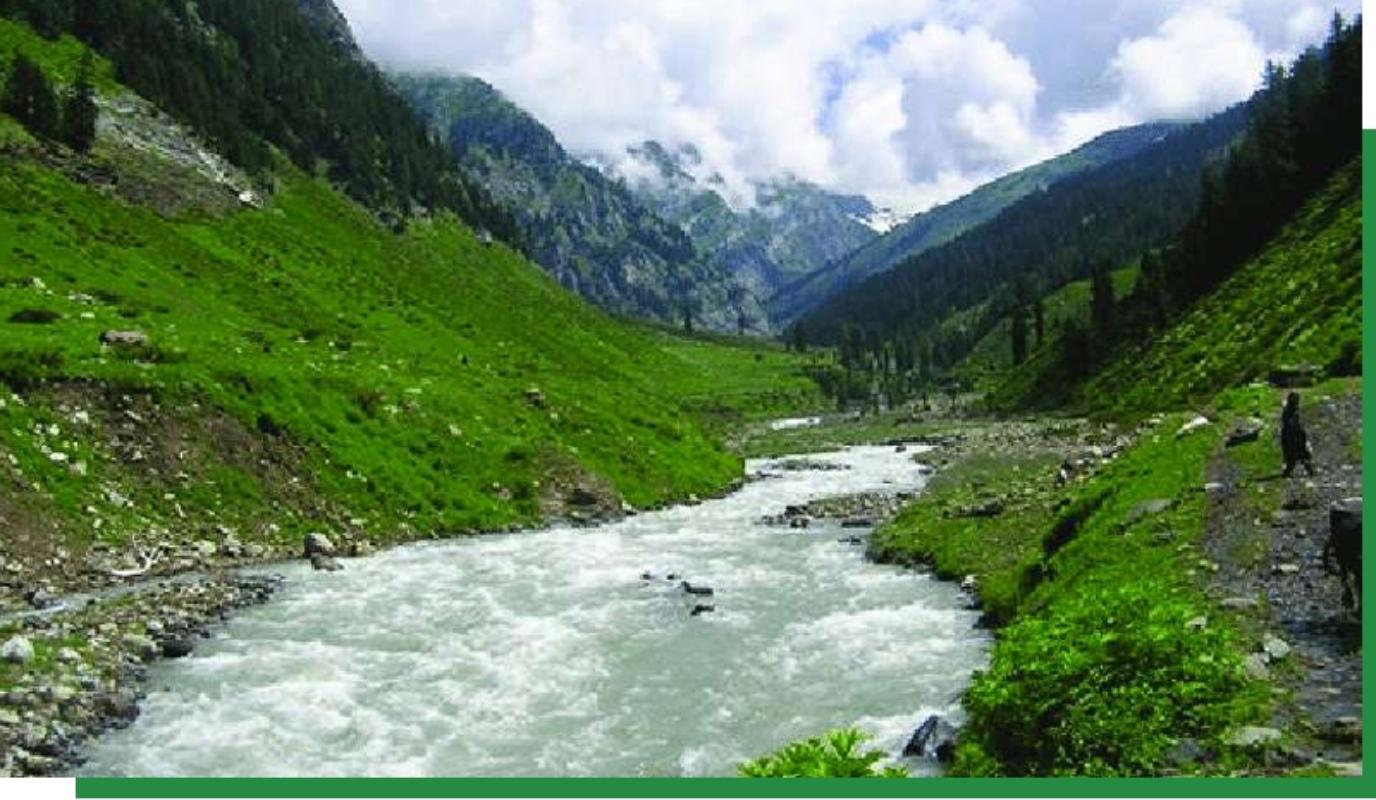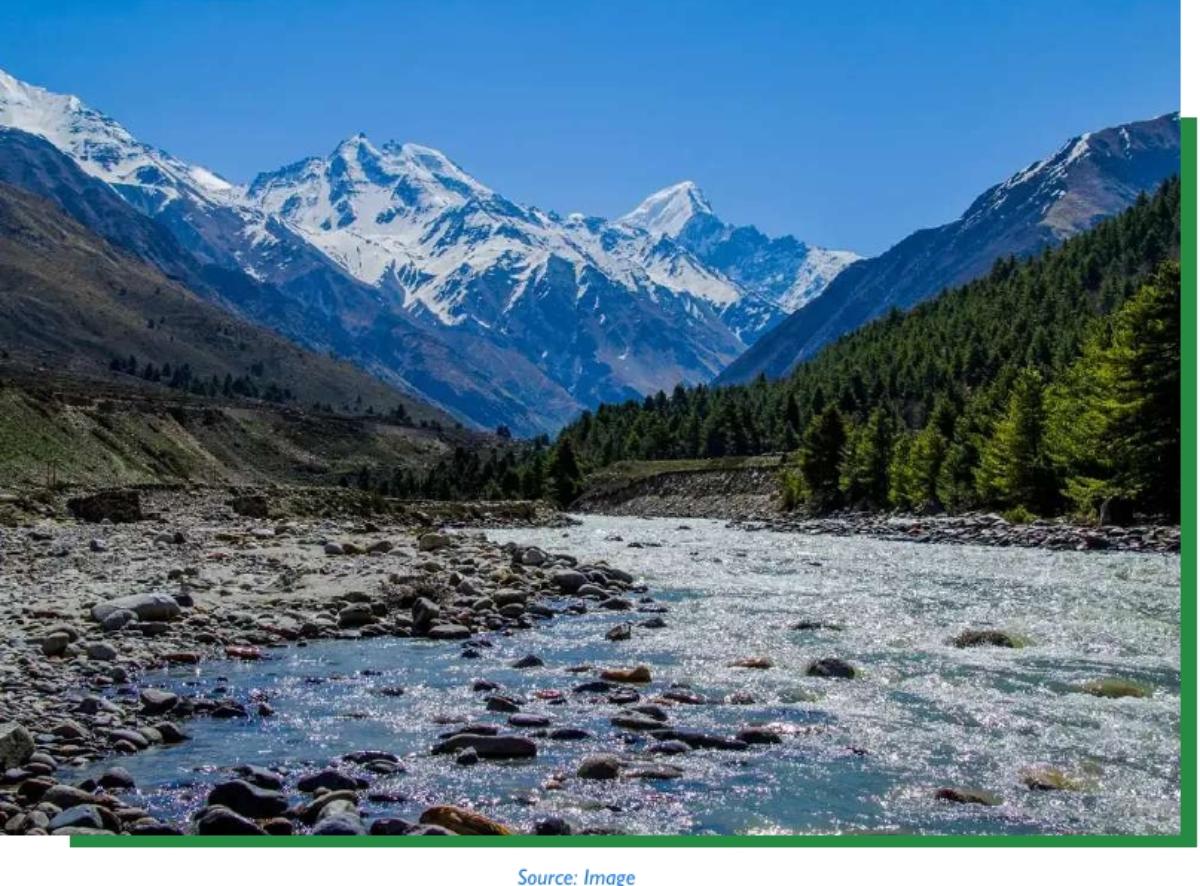While various scientific studies are underway to know the origin of the SARS Cov-2 (COVID-19), the World Health Organization has recently admitted that the available evidence suggests that the SARS Cov-2 (COVID-19) has zoonotic sources[1](diseases transmitted from animals). This zoonotic outbreak is exceptionally big in terms of its global spread, fatality and its social and economical impacts. The COVID-19 pandemic has devastated the world economy. The Global Economic Prospect of June 2020 released by the World Bank on June 08, 2020 noted that the pandemic and shutdown of economic activities all across the globe to contain the spread of SARS Cov-2 virus have plunged the global economy into a severe contraction. According to the estimate the global economy will shrink by 5.2% this year, which is the deepest recession since the Second World War. Further, it will push millions of people into extreme poverty[2]. The governor of RBI in May 2020 admitted that the lockdown has brought Indian economy to a grinding halt and the GDP growth of the country will be in negative this year[3]. To overcome these economic challenges, the government of India has announced a stimulus package in the month of May 2020. Moreover, various other policy decisions have been taken at the central and state level to boost economic growth. However, many experts have raised concern about the equitable distribution of benefit. Moreover, it is worth questioning whether these policy decisions are in the right direction to deal with an extraordinary crisis emerged from the COVID-19 pandemic.
Various experts believe that the current economic crisis is different from previous major crises. The origin of zoonotic outbreaks lies in the increasing anthropogenic activities and massive land use change across the globe. So the urgency of the sustainable economic growth in this crisis is much more than ever to prevent any such zoonotic outbreak in the future. The latest Petersberg Climate Dialogue held in April 2020 attended by environment ministers of 30 different countries including India advocated for green recovery from the current crisis[4]. Similarly, in a recent interview to the media by chief economist of IMF, Ms. Gita Gopinath has asked member nations of IMF to push environmental friendly economic activities for equitable and sustainable recovery[5]. History suggests that recovery from major economic crises including the oil crisis of 1973 and 1979, fall of USSR in 1991, Asian financial crisis of 1997 and global financial crisis of 2008 led to faster growth in the rate of environmental degradation due to aggressive industrialization and growth[6]. Such growth will only create space for more zoonotic outbreaks in the future. Therefore, it is important to deal with the current crisis differently.
Environmental Degradation and the Spread of Zoonotic Diseases
In the last more than one century hundreds of zoonotic diseases have jumped from wildlife reservoirs to human settlements. Many of these diseases have posed a serious threat to the life and livelihood of common people. For many zoonoses, we don’t have clear evidence how they spilled over from wildlife reservoirs. But scientists across the globe have investigated sources of some of the zoonoses and the way by which they transmitted to human settlement. Ostfeld (2009) in one of his studies about two zoonoses namely West Nile Virus (WNV) and Lyme Disease (LD) found strong correlation with destruction of natural habitat of various wild species and the spill over of these two diseases. The study found that the biodiversity loss resulted in habitat destruction and fragmentation, pollution, invasion of exotic species and direct human exploitation.
A working group of experts on Land Use Change and Disease Emergence in its report in 2004 found that anthropogenic land use changes worldwide drive a range of zoonotic outbreaks (Jonathan A. Petz et. al, 2004). Therefore, Ostfeld (2009) in his article based on study of MNV and LD diseases concluded that the richness of biodiversity works as a buffer against transmission of zoonotic diseases. There are a number of examples worldwide to show that anthropogenic activities have instigated outbreaks of zoontic diseases. Nipah virus first crossed over from fruit bats to pigs and from pigs to humans. Similarly, relocation of fruit bats due to destruction of forest in Australia infected horses and then infected horses transmitted it to veterinarian examining a sick horse (Robin A Weiss et al, 2004).
Fig: Common Causes of Zoonotic Spillover and Spill-back

Source: Peter Daszak et al, 2000
A team of scientists led by Peter Daszak surveyed major zoonotic outbreaks in the world to understand their emergence. They also tried to gather information about factors associated with emergence of zoonotic outbreaks. The study found that human activities such as extension of farming, translocation of infected species, dispersal of infected host, spill-back from domestic animal and translocation of naïve animal are few documented factors behind emergence of diseases like Avian malaria, Ebola, Cryptosporidiosis in Europe and Canine distemper in Africa (Daszak, 2000). An expert group led by Dr. Jonathan A Patz listed major drivers of infectious diseases (zoonotic) outbreaks to suggest actionable policies. The group found that anthropogenic activities such as agriculture encroachment, deforestation, road construction, dam building, irrigation, wetland modification, mining, rapid urbanization and degradation of coastal zone causes a cascade of factors that exacerbate spillover and spill back of infectious diseases (Jonathan et al, 2000).
Unlike early researches on hotspots of emerging infectious diseases, the latest and updated research by experts associated with Eco Health Alliance have warned that no area in the world is safe from emergence of new zoontic outbreaks (Allen et al 2017). The probability of emergence of new infectious diseases is also high in areas where anthropogenic activities are rampant. New zoonotic diseases in any area may occur “either from ‘spillover’ or cross species transmission or simply by extension of geographic range into new or changed habitat (Jonathan et al, 2000).”
Various studies have revealed that the land use change in many ways across the globe is the main factor associated with the emergence and re-emergence of zoonotic pathogens. The joint conference of WHO, FAO and OIE in 2003 on the challenges of zoonoses recognized numerous social, technological, ecological and microbial factors associated with the emergence and spread of zoonotic pathogens. The conference further divided these factors into primary risk factors and amplifying risk factors. The conference recognized that the ecological factors such as change to agricultural production, environment pollution, changing consumption patterns and increasing human-animal contact as primary risk factors (OIE, 2004). Woolhouse et al (2005) in their study categorized risk factors for zoonotic outbreaks into 10 categories and prioritized them based on their ability to instigate zoonotic outbreaks. They also found that the land use change is the most influential factor for emergence and re-emergence of zoonotic infections. Likewise a latest study by Eco Health Alliance also concluded that the “global disease emergence is linked directly to human-induced drivers like land-use change and interaction between humans and wildlife in highly bio diverse regions of the world[7].”
Environmental Degradation during COVID Pandemic in India
Various media reports during the nationwide lockdown in April and May 2020 documented regeneration of nature and natural resources due to drastic decrease in the number of anthropogenic activities. Some reports suggest that quality of water in many rivers improved significantly, the sky witnessed significant improvement due to decrease in air pollution and movement of wildlife and birds observed all across the country. When experts and people in general were welcoming these changes in the environment, the government was busy in sanctioning forest and wildlife clearances to more anthropogenic activities in some of highly bio diverse forests in India.
In the month of April and May, 2020 various authorities responsible for the protection of the environment and forest have cleared some of very controversial projects in dense forests. While the nation was under lockdown to contain the spread of COVID-19, the Forest Advisory Committee and National Board for Wild Life (NBWL) cleared projects like coal mining in Dehing Patkai Elephant Reserve in Assam, Etalin Hydroelectric project in Dibang Valley of Arunachal Pradesh and widening of national highway and lying of power transmission line in the Bhagwan Mahavir Wildlife Sanctuary in Goa. These clearances were given in meetings organized through video conferencing. Such arrangements of the meetings undermined requirement of site visit by experts, involvement of local communities in the decision and open public hearing. These decisions also overlooked the main causes of zoonotic pandemic such as COVID-19. Many scientific studies across the globe have found that the increased anthropogenic activities have resulted in the loss of biodiversity. It further led to the destruction of natural habitat of wildlife. The struggle of wildlife to cope with destroyed habitat either created situations for increased in number of human-wildlife contact or resettlement of wildlife leading to inter-species transmission of pathogens (Daszak, 2000).
The COVID-19 pandemic has brought the issues of sustainable growth in the centre stage of many national and international policy discussions. It has been argued that not only for the revival of the economy but to attain global climate change goals and prevention from other zoonotic diseases in the future, we must think of green recovery. However, in the contrast we have seen a number of hasty environmental clearances to many controversial and ecologically adverse developmental projects in the last two and half months in India. According to the data available on the website of MoEF&CC, from April 2020 to 15th June 2020, the government of India provided stage-I forest clearances to 249 projects. Similarly, the government has provided stage-II forest clearances to 232 projects in this period[8]. Few leading environmentalists and conservationists have criticised the government for its decision of forest and wildlife clearances to some highly controversial projects[9]. The Etalin hydropower project in Arunachal Pradesh, projects in the Bhagwan Mahavir Wildlife Sanctuary in Goa and coal mining in Dehing Pakai Elephant Reserve in Assam are few of them.
The Etalin hydro-power project seeks to divert 1150.08 hectares of land and the falling of more than 2.78 lakh trees in one of the most bio diverse zones of the Himalayan region in the Dibang Valley of Arunachal Pradesh. While the project will displace around 100 families, it will affect many others indirectly. Moreover, the biodiversity rich area will be threatened by this project. A study carried out by the Wildlife Institute of India (WII) on the request of Forest Advisory Committee (FAC) found that the proposed project will adversely affect habitat of 159 species of butterflies, 113 species of spiders, 11 species of odorates, 31 species of reptiles, 230 bird species and 21 mammalian species. The project will also endanger 413 species of plants[10]. The proposed site is 10 to 14 km away from the Dibang WildLife Sanctuary. The commencement of the Etalin project will also fragment habitat of tigers living in the Sanctuary. The FAC in its meeting on April 23, 2020 has approved the diversion of the forest land for the project; however it has asked the Union Ministry of power to consider the relevance of the project as it has been delayed by more than 6 years.
The North Eastern Coalfields (NEC) was in controversy for illegal extension of its coal mine in the Dehing Patkai Elephant Reserve in Assam. The extension of coal mining will fragment the habitat of elephants living in this rainforest of north-eastern India. Despite several controversies, the National Board of Wildlife in its meeting on April 24, 2020 approved extension of the open cast coal mining by the North Eastern Coalfields. This extension will change land use of 98.59 hectares of crucial elephant habitat[11]. Similarly the NBWL has cleared three different developmental projects in the Bhagwan Mahvir Wildlife Sanctuary and Mollem National Park. These two reserve forests in Goa are integral part of biodiversity rich Western Ghat forest. These projects include widening of national highway, laying of transmission line and doubling the existing railway line. These three projects will convert more than 134 hectare of forest land resulting in fragmentation and destruction of habitat of wildlife species such as tigers, dhole, mouse deer, pangolin and many other wildlife and plant species[12].
Other than the health crisis, the government is worried about revival of the economy. To boost economic activities, the government has announced various policy changes in the last three months. Approval for long pending projects in the forest area in the last few months can be justified by the government’s effort to revive the economy. However, the question is, whether these measures will help to revive the economy in a more sustainable manner?
Future of the Trade-off between Environment and Growth in India
The Environment Impact Assessment (EIA) is a mandatory process under the Environment (Protection) Act, 1986 for all new developmental projects including extension and modernization of existing projects. The purpose of the EIA is to minimise the environmental cost by imposing restrictions and ensuring implementation of the environmental plan for compensating environmental loss. The latest EIA notification issued by the government of India in 2006 increased the scope of EIA and brought in many projects under the ambit of EIA notification. The notification was amended subsequently to fill policy gaps since then. Now to consolidate all those subsequent amendments to the EIA notification of 2006 and incorporation of few more amendments, the MoEF&CC has issued a new draft of EIA notification in March 2020. The draft is being put in public domain for comments and suggestions. However, various environmentalists have questioned the timing of issuance of the notification for public consultation. Experts have also criticised new amendments proposed in the draft to expedite the process of the environmental clearance for development projects.
Amendments to the EIA notification of 2006 to consolidate subsequent amendments and further strengthening of environment regulation are highly required. While the new draft notification is appreciated for its attempt to consolidate all changes promulgated after 2006, it is also criticised for several dilutions to undermine environmental cost of a development project. These dilutions will have a long lasting impact on our environment, sustainability and national commitments related to climate change negotiations. Experts have cautioned that the proposed amendments would accelerate anthropogenic activities resulting in faster destruction of forest and wildlife habitat.
The draft EIA notification provides various relaxations for project proponents from existing stringent provisions. Some of these new controversial provisions in favour of businesses are as follows.
1- Increased the Validity of Environment Clearances: The new draft EIA notification has increased the validity of environment clearance for few major activities. The validity of environmental clearance for mining projects is proposed to increase for 50 years against 30 years. The validity for river valley projects is proposed to increase to 15 years from the existing 10 years. The long duration validity of environment clearance to projects would nullify the possibility of strengthening environmental safeguard based on changing environmental conditions and requirements.
2- Relaxation in Self Compliance Report: The self compliance report submitted by project proponents in respect of conditions stipulated in environment clearances is a crucial tool of monitoring for concerned authorities. The current EIA notification provides for half-yearly submission of the self compliance reports. However, the draft notification proposes more relaxation to project owners by making them submit their self-compliance report once a year.
3- Restrictions on EAC and SEAC: Appraisal is the detailed scrutiny of the application submitted by project proponents along with the final EIA report and outcome of public consultations to grant environment clearance. The Expert Appraisal Committee (EAC) at central and State Expert Appraisal Committee (SEAC) at the state level while scrutiny of application have the right to ask for independent studies to understand environmental issues of the proposed area in detail. The new draft of notification has restricted EAC and SEAC from recommending fresh study, unless new facts come to the notice of the committee.
4- Compromising Process of Public Hearing: Public hearing is one of the important tools to involve local people and stakeholders in the environmental planning of any project. The new notification has proposed a decreasing notice period for public hearing from 30 days to 20 days. Experts believe that 20 days is inadequate for the public to decipher highly technical and scientific EIA reports. At times these processes require legal advice to respond constructively. Therefore, reduction in notice period for public hearing would undermine the importance of free, fair and informed public hearing.
5- Exemption from EIA Process: Screening is the process under which the State Expert Appraisal Committee (SEAC) has power to assess the environmental impact of projects under category B2. It is the screening process by SEAC, which decides whether the proposed project under B2 category needs to go through the complete EIA process or not. The new EIA notification has proposed to exempt most category B2 projects from screening by SEAC. This is a pure mechanical approach to very complex environmental issues.
History tells us that after every major economic crisis, the world accelerated the destruction of nature and the environment to revive the economy. Perhaps, this is the easiest way to respond to any economic crisis. Today, when the entire world is looking for the revival of the economy, there is a high chance of more and faster environmental degradation. In the last few months various proposed projects in and around highly bio diverse areas have been granted environmental clearances signalling that India is heading towards the conventional method of economic revival. Proposed changes in the EIA rules by the MoEF&CC further indicate that more destruction of nature will be allowed in the name of economic growth.
Conclusion
The global transmission of zoonotic SARS Cov-2 and the revival of nature due to global lockdown and industrial slowdown have an important life giving message to mankind. So it is up to us whether we want to learn from it or not. The pandemic and its consequences are enough to learn that the over exploitation of nature, destruction of forest and fragmentation of wildlife habitat for various purposes will lead to more zoonotic outbreaks in the future. The lockdown and slow down of industrial output across the globe adopted by governments to contain the spread of COVID-19 resulted in a wildlife boom and significant improvement in the environment. This also tells us that our daily production, consumption and habits have serious environmental consequences. If not anything else, to be free from the danger of any such zoonotic outbreak in future, we must change the way we live and behave.
References
- Ostfeld, R.S., 2009, ‘Biodiversity loss and the rise of zoonotic pathogens’, Journal Compilation, 2009, European Society of Clinical Microbiology and Infectious Diseases, CMI, 15 (Suppl. 1), 40–43
- Patz A. Jonathan, Peter Daszak, Gary M. Tabor, A. Alonso Aguirre, Mary Pearl, Jon Epstein, Nathan D. Wolfe, A. Marm Kilpatrick, Johannes Foufopoulos, David Molyneux, David J. Bradley, and Members of the Working Group on Land Use Change and Disease Emergence, 2004, ‘Unhealthy Landscapes: Policy Recommendations on Land Use Change and Infectious Disease Emergence’, VOLUME 112 | NUMBER 10 | July 2004 • Environmental Health Perspectives
- Weiss Robin A and Anthony J McMichael, 2004, ‘Social and environmental risk factors in the emergence of infectious diseases’, Nature Medicine Supplement, VOLUME 10 | NUMBER 12 | DECEMBER 2004
- Daszak Peter Daszak, Andrew A. Cunningham and Alex D. Hyatt, 2000, ‘Emerging Infectious Diseases of Wildlife— Threats to Biodiversity and Human Health’, Science Compass, Vol 287, 21 JANUARY 2000
- Patz A. Jonathan, Peter Daszak, Gary M. Tabor, A. Alonso Aguirre, Mary Pearl, Jon Epstein, Nathan D. Wolfe, A. Marm Kilpatrick, Johannes Foufopoulos, David Molyneux, David J. Bradley, and Members of the Working Group on Land Use Change and Disease Emergence, 2004, ‘Unhealthy Landscapes: Policy Recommendations on Land Use Change and Infectious Disease Emergence’, VOLUME 112 | NUMBER 10 | July 2004 • Environmental Health Perspectives
- Allen Toph, Kris A. Murray, Carlos Zambrana-Torrelio, Stephen S. Morse, Carlo Rondinini, Moreno Di Marco6, Nathan Breit, Kevin J. Olival & Peter Daszak, 2017, ‘Global hotspots and correlates of emerging zoonotic diseases’, NATURE COMMUNICATIONS | DOI: 10.1038/s41467-017-00923-8
- OIE, 2004, ‘Report of the WHO/FAO/OIE joint consultation on emerging zoonotic diseases’, May, 2004, accessed from: https://www.oie.int/doc/ged/D5681.PDF
- Mark E.J.and Sonya Gowtage-Sequeria, 2005, ‘Host Range and Emerging and Reemerging Pathogens’, Emerging Infectious Diseases, Centre of Infectious Disease, University of Edinburgh, UK, Vol. 11, No. 12, December 2005
Footnotes:
[1] WHO COVID-19 Situation Report- 94, 23rd April 2020, Accessed from: https://www.who.int/docs/default-source/coronaviruse/situation-reports/20200423-sitrep-94-covid-19.pdf?sfvrsn=b8304bf0_4, Accessed on 15.6.2020
[2]The World Bank, Press release no. 2020/209/EFI, June 8, 2020, Accessed from: https://www.worldbank.org/en/news/press-release/2020/06/08/covid-19-to-plunge-global-economy-into-worst-recession-since-world-war-ii, Accessed on June 9, 2020.
[3] The Economic Times, GDP Growth in 2020-21, likely to be in negative, May 22, 2020, Accessed from: https://economictimes.indiatimes.com/news/economy/indicators/gdp-growth-in-2020-21-likely-to-in-negative-rbi-governor/articleshow/75886009.cms?from=mdr, Accessed on June 18, 2020.
[4] IISD, announcements are not enough- concrete steps for post-pandemic green future, May 12, 2020, accessed from: https://sdg.iisd.org/commentary/guest-articles/announcements-are-not-enough-concrete-steps-for-post-pandemic-green-future/, Accessed on June 16, 2020.
[5]The Print, Targeted policies, managing debt, green economies, June 9, 2020, Accessed from: https://theprint.in/economy/targeted-policies-managing-debt-green-economies-gita-gopinaths-covid-survival-guide/438472/, Accessed on June 19, 2020.
[6]EPW Engage, Economic Stipules packages and environmental sustainability, May 08, 2020, Accessed from: https://www.epw.in/engage/article/covid-19-crisis-economic-stimulus-packages-and-environmental-sustainability, Accessed on June 18, 2020.
[7] Eco health Alliance: https://www.ecohealthalliance.org/2017/10/global-disease-hotspots-2-0, Accessed on: 1.6.2020
[8] PARIVESH, MoEF&CC, Accessed from: https://parivesh.nic.in/compareanalytics.aspx, Accessed on June 17, 2020.
[9]The Week, Environmentalists question clearances given during COVID-19 lockdown , Accessed from: https://www.theweek.in/news/india/2020/05/13/environmentalists-question-clearances-given-during-covid-19-lockdown.htmlAccessed on June 15, 2020.
[10] PARIVESH, MoEF&CC, Minutes of the meeting of the forest advisory committee held on April 23, 2020, Acessed from: http://forestsclearance.nic.in/writereaddata/FAC_Minutes/51111121912211FACminutes23April20_compressed.pdf, Accessed on June 16, 2020.
[11] The Wire, India’s Envrironment Ministry Unlocked Many Protected Areas During the Lockdown, Accessed from: https://science.thewire.in/uncategorised/indias-environment-ministry-unlocked-many-protected-areas-during-the-lockdown/, Accessed on 15 June, 2020.
[12] The Wire, India’s Envrironment Ministry Unlocked Many Protected Areas During the Lockdown, Accessed from: https://science.thewire.in/uncategorised/indias-environment-ministry-unlocked-many-protected-areas-during-the-lockdown/, Accessed on 15 June, 2020.








